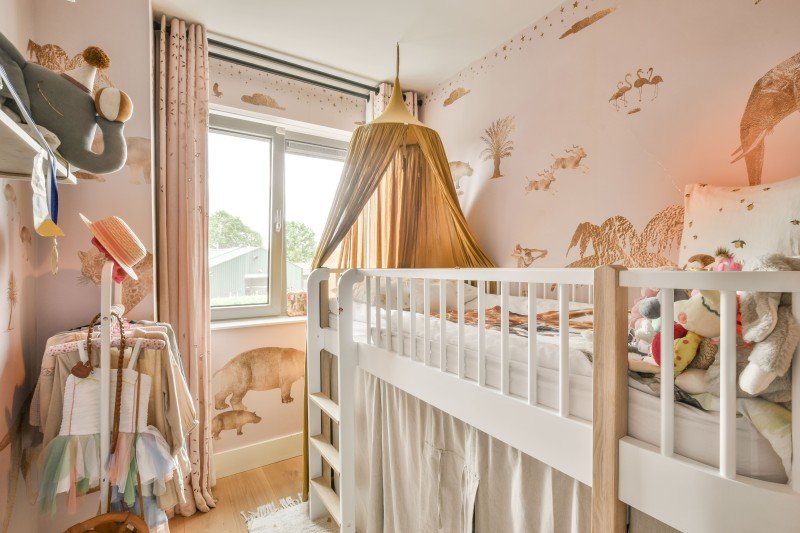An Intermediate Guide For Bunk Beds
페이지 정보

본문
Exploring Bunk Beds: A Comprehensive Guide
Bunk beds have actually long been a staple in kids's bed rooms, dorm rooms, and even homes with restricted space. Not only do they provide a practical sleeping service, however they also create a fun and imaginative environment for children and a great space-saver for adults and families. This article will check out whatever you require to learn about Cheap Childrens Bunk Beds beds, from types and materials to safety suggestions and purchasing suggestions.
Table of Contents
- Types of Bunk Beds
- Standard Bunk Beds
- Loft Beds
- Triple Bunk Beds
- L-Shaped Bunk Beds
- Material Options
- Wood
- Metal
- Security Considerations
- Purchasing Guide
- FAQs
Kinds Of Bunk Beds
Bunk beds can be found in various designs to suit different needs and preferences. Here's a breakdown of the most typical types:
Conventional Bunk Beds
Traditional bunks typically include 2 beds stacked vertically on top of one another. These beds are ideal for brother or sisters sharing a room or for optimizing sleeping space in guest spaces.
Loft Beds
Loft beds stand similarly to traditional bunk beds however do not have a lower sleeping area. Instead, they typically integrate a desk or seating location below, making them a great option for small spaces needing multifunctionality.
Triple Bunk Beds
Triple bunk beds are designed for three occupants, with beds stacked in a three-tier configuration. These are less common but can be an enjoyable service for large families or sleepovers.
L-Shaped Bunk Beds
With one bed positioned horizontally and the other vertically, L-shaped bunk beds are often geared up with additional features such as desks or storage drawers and can match corner spaces in a room.
Comparison of Bunk Bed Types
| Bed Type | Perfect Use | Description |
|---|---|---|
| Standard | Shared bedrooms or guest rooms | Two beds stacked vertically |
| Loft | Small rooms requiring multi-purpose space | Upper bed with open space beneath |
| Triple | Big families or pajama parties | 3 beds stacked vertically |
| L-Shaped | Corner or flexible spaces | A mix of vertical and horizontal beds |
Material Options
Bunk beds are manufactured from different products, with wood and metal being the most common. Each product has its benefits and drawbacks.
Wood
- Resilience: Generally robust and can hold up against years of use.
- Aesthetic Appeal: Offers a traditional look that can mix with numerous decors.
- Weight Capacity: Typically sturdier; can support much heavier weights.
- Drawbacks: May be more pricey than metal choices and can be susceptible to scratches.
Metal
- Durability: Generally lightweight and easy to move however still tough.
- Modern Design: Often is available in sleek designs, making it appealing for contemporary areas.
- Economical: Usually more economical than wooden alternatives.
- Drawbacks: Can be cold to the touch in winters and might not have the same visual appeal for some purchasers.
Security Considerations
When it pertains to bunk beds, security can not be ignored. Here are key safety suggestions to bear in mind:
- Guardrails: Ensure that the leading bunk has guardrails on both sides to prevent falls.
- Sturdy Construction: Check for a strong construct and sturdy products to hold up against weight and motion.
- Weight Limit: Adhere to the manufacturer's weight limit for both the upper and lower bunks.
- Ladder Design: Choose bunks with a safe, easy-to-climb ladder and avoid any sharp edges or rungs.
- Age Restrictions: Most producers suggest that children under the age of 6 need to not sleep in the upper bunk.
Purchasing Guide
When looking for bunk beds, consider the following elements to find the very best suitable for your needs:
- Space Availability: Measure the space size and ceiling height, making sure there is adequate space for the leading bunk.
- Bed Size: Decide in between twin, complete, or bigger sizes based upon your requirements and the size of the room.
- Design Preference: Consider the general design of the bedroom to discover an ideal style.
- Reduce of Setup: Look for a bunk bed that is uncomplicated to put together.
- Spending plan: Bunk beds are available in different cost varieties, so figure out a spending plan before starting your search.
Frequently asked questions
1. What is the recommended age for kids to sleep on the leading bunk?
Children aged six and older are typically recommended to sleep on the top bunk to minimize the threat of falls.
2. How can I make my bunk bed more secure?
To enhance safety, make sure guardrails are appropriately set up and inspect that the bed is positioned on a flat surface. Additionally, motivate children to utilize the ladder carefully.
3. Can I transform a bunk bed into 2 separate beds?
Numerous bunk beds are designed to be convertible. Check the producer's requirements for convertibility features.
4. What accessories are available for bunk beds?
Common accessories include beddings, storage drawers, staircases instead of ladders, and tented canopies for an enjoyable visual appeal.
5. How do I maintain my bunk bed?
Regular checks for loose screws or structural stability can help ensure safety. Dust the bed regularly and tidy spills promptly to keep the products in good condition.
Bunk beds are versatile and a space-efficient service for numerous living scenarios, from kids's rooms to visitor accommodations. With lots of styles and materials available, prospective purchasers have a wealth of options to think about, ensuring a mix of usefulness and aesthetic appeals. By prioritizing safety and following the suggestions outlined in this guide, individuals can discover the best bunk bed that suits their space and way of life, all while developing a pleasurable sleeping environment.

- 이전글The Top Buy A C Driving License Online The Gurus Are Using Three Things 25.06.10
- 다음글9 Lessons Your Parents Taught You About Robotic Vacuum Cleaner Uk 25.06.10
댓글목록
등록된 댓글이 없습니다.
